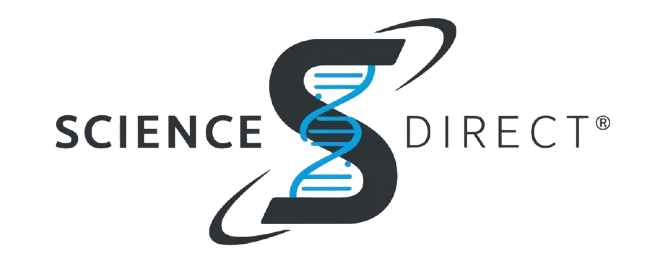The Product Improvement Life Cycle (SDLC) is an organized way to deal with creating programming that guarantees quality, effectiveness, and consistency all through the improvement interaction. The SDLC structure characterizes the different stages associated with making programming applications, from the underlying intending to the last sending and upkeep. By following the SDLC, groups can methodicallly plan, plan, assemble, test, and keep up with programming applications.
Periods of the Product Advancement Life Cycle
Prerequisite Get-together and Examination: The SDLC interaction starts with figuring out the undertaking necessities. In this stage, the advancement group associates with partners to accumulate all the vital data about the product’s motivation, elements, and interest group. The objective is to characterize the issue the product is expecting to settle, guaranteeing that every one of the essential particulars are caught precisely. The result of this stage is a far reaching prerequisite record, which fills in as the plan for the following progressive phases.
Framework Configuration: In this stage, the product’s engineering is planned in view of the assembled prerequisites. The framework configuration stage includes both undeniable level plan (HLD) and low-level plan (LLD). The significant level plan frames the product’s general engineering, including its parts and the way that they interface. The low-level plan centers around the particular functionalities of individual parts. This stage likewise incorporates the determination of innovation stacks and apparatuses that will be utilized for advancement.
Execution (Coding): During the execution stage, the genuine coding happens. Engineers compose the source code as indicated by the framework configuration archives. This stage is normally separated into more modest errands, each allocated to individual engineers or groups. The programming dialects, systems, and advancement devices chose in the plan stage are used to rejuvenate the product’s design. The objective is to make a completely utilitarian application in light of the necessities.
Testing: When the product is created, it goes through thorough testing to guarantee that it meets the expected details. The testing stage recognizes any deformities or bugs inside the application and checks its usefulness, execution, security, and ease of use. Various sorts of testing, for example, unit testing, incorporation testing, framework testing, and client acknowledgment testing (UAT), are led to recognize and fix issues. The testing stage guarantees that the product is solid and fills in true to form in genuine situations.
Arrangement: After the product passes all testing stages, it is prepared for organization. The sending stage includes the arrival of the product to the creation climate, making it accessible for end-clients. This should be possible in stages, either as a full send off or as a beta delivery to a chose gathering of clients. The arrangement interaction likewise includes setting up the vital framework and setups, it is available and useful to guarantee that the product.
Upkeep and Backing: The last period of the SDLC includes keeping up with and supporting the product after its arrangement. This stage incorporates fixing bugs, giving updates, and guaranteeing that the product keeps on gathering the developing requirements of clients. Upkeep can likewise incorporate upgrading the product by adding new elements, further developing execution, or making it viable with new innovations. Compelling upkeep is basic to guaranteeing the drawn out progress of the product.
Models of the Product Improvement Life Cycle
There are a few models that address various ways to deal with executing the SDLC. The absolute most generally utilized SDLC models include:
Cascade Model: The Cascade model is one of the most seasoned and most clear methodologies, where each stage is finished consecutively. When a stage is finished, it isn’t returned to, making it reasonable for projects with clear cut necessities.
Spry Model: The Light-footed model spotlights on adaptability and joint effort. It partitions the venture into more modest, sensible emphasess called runs, where each run conveys a functioning form of the product. Spry takes into account consistent criticism and variation, making it ideal for dynamic activities.
V-Model (Check and Approval): The V-Model is like the Cascade model yet underlines confirmation and approval at each stage. Every improvement stage is straightforwardly connected with a relating testing stage.
Iterative Model: In this model, the product is created in emphasess or gradual deliveries. Every emphasis expands upon the past one, and criticism is consolidated to work on the product in the following cycle.
Twisting Model: The Winding model consolidates iterative advancement with risk the board. It takes into account gradual turn of events, where the venture advances through rehashed cycles or twistings, with risk appraisal and alleviation at each stage.
Advantages of Following the SDLC
Worked on Quality: By following a methodical and organized approach, the SDLC distinguishes deserts right off the bat in the improvement cycle, working on the general nature of the product.
Cost Effectiveness: Legitimate preparation and investigation assist with keeping away from superfluous changes or tasks running amok, guaranteeing that the venture stays inside financial plan.
Unsurprising Results: The SDLC gives clear achievements and expectations, permitting groups to follow progress and oversee assumptions successfully.
Better Venture The executives: By breaking the task into stages, the SDLC considers better asset assignment, booking, and coordination among groups.
Improved Cooperation: The SDLC encourages correspondence between partners, designers, and analyzers, guaranteeing that everybody is lined up with the venture’s objectives and prerequisites.
End
The Product Advancement Life Cycle is a fundamental structure that directs the formation of programming beginning to end. Whether an organization utilizes the Cascade, Dexterous, or another SDLC model, the objective continues as before: to convey top notch programming that addresses client issues, is versatile, and can be kept up with effectively. By following the SDLC, groups can guarantee that their product advancement process is smoothed out, unsurprising, and effective.
